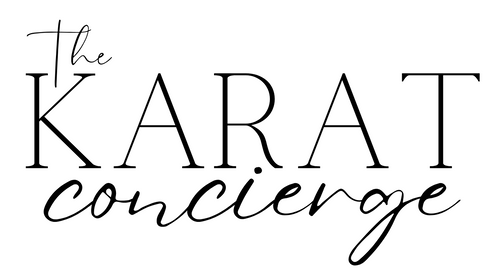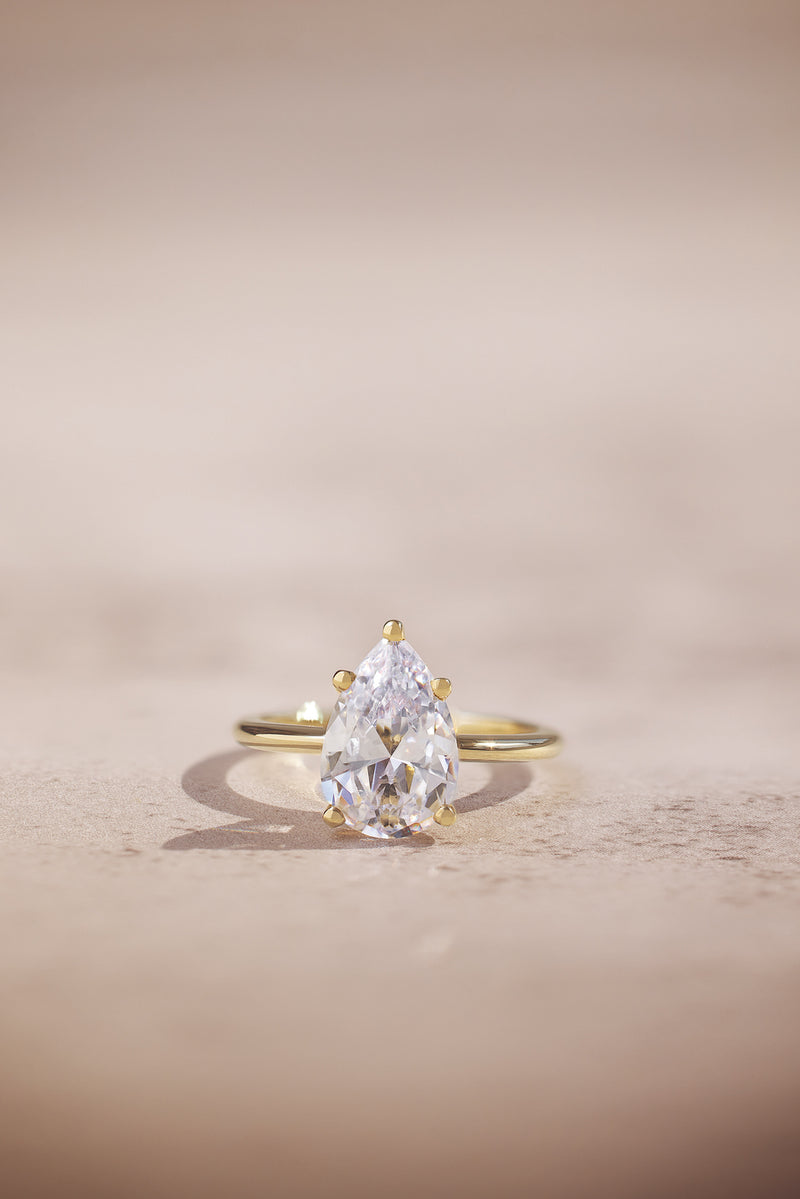In the realm of diamonds, few gems exude the elegance and romance quite like the pear-shaped diamond. Characterized by its unique teardrop silhouette, this exquisite gem seamlessly blends the brilliance of a round brilliant cut with a distinct pointed end, setting it apart from its counterparts. The versatility of pear-shaped diamonds is remarkable, making them an ideal choice for a range of jewelry pieces, from engagement rings to pendants and earrings.
What sets the pear shape apart is not just its appearance but also the optical illusion it creates. It's shape also gives the illusion of a larger stone than some of it's counterparts such as a round shape due to the fullness and the extended length you gain with the elongated shape. The long shape of this diamond imparts a subtle yet enchanting slimming effect, making it a favored choice for engagement rings.
Pear-shaped diamonds are cut to maximize the carat weight from the original rough stone. The elongated shape allows the cutter to retain more of the diamond's mass, resulting in a larger-looking gem whether it's cut from an elongated rough diamond or cut to avoid a large or dark inclusion.
To maximize the cut, color and clarity of a pear-shaped diamond, prioritize the following:
Color: D-E-F-G
Clarity: F-VS1-VS2-SI1-SI2
Cut: Minimal to no bow-tie
The brilliance of pear-shaped diamonds is further accentuated by the strategic placement of brilliant facets, ensuring a captivating sparkle that catches the eye. While faceted cut stones such as round and pear shaped diamonds tend to show color slightly more than step cut stones such as emerald cuts, a notable aspect of pear-shaped diamonds is the potential for color concentration at the pointed end or tip. This is due to the structure of the diamond and the way light interacts with it. Color may appear more noticeable at the tip compared to other parts of the diamond.When choosing a pear shape, a stone with a G color rating or better (D-G) is going to give the look of a white diamond.
As with all faceted stones, clarity is an area where you can sacrifice because faceted cut stones (round, pear, etc) have more cuts than step cut stones (emerald, asscher cuts) so they tend to hide inclusions more easily. Typically an SI1 and some SI2 stones will look eye clean, meaning you will not see inclusions with the naked eye. Pear-shaped diamonds may hide certain inclusions near the pointed end, making them less visible. However, inclusions towards the center or along the edges may be more noticeable. As with all stones, a well-cut pear-shaped diamond with proper proportions can enhance its brilliance and may help in minimizing the visibility of inclusions.
Similar to oval shapes, pear-shaped diamonds may display the "bow tie", which is a term used in the context of diamond cutting, and it refers to a dark, bow tie-shaped area that appears across the center of some elongated fancy-shaped diamonds, including pear-shaped diamonds. It occurs when light leaks out through the pavilion (bottom) of the diamond, creating a shadow resembling a bow tie, which extends across the width of the diamond. optical effect can impact the overall appearance of the diamond and will slightly decrease the value of the stone. This is one of many reasons not to purchase a diamond online without having a trained jeweler examine the stone for you.
Beyond aesthetics, pear-shaped diamonds carry symbolic significance. Often associated with tears of joy, this unique shape represents emotional connection and romance, making it a meaningful choice for those looking to convey a deeper sentiment through their jewelry. Whether adorning an engagement ring that symbolizes a lifelong commitment or gracing other pieces with sentimental value, the pear-shaped diamond adds a touch of romance to every occasion.
Practical considerations play a role in the enduring appeal of pear-shaped diamonds. The pointed end, while adding to its charm, can be susceptible to chipping. Therefore, choosing a setting with well-designed prongs becomes crucial to ensure the longevity of the diamond, particularly in engagement rings.
In terms of value, pear-shaped diamonds can hold their own. Factors such as quality, clarity, and the credibility of the source influence their resale value. The timeless appeal of classic shapes further contributes to the enduring value of pear-shaped diamonds, as they continue to remain popular over the years.
In conclusion, the allure of pear-shaped diamonds extends beyond their visual charm. Their unique shape, symbolism, and practical considerations make them a versatile and timeless choice for jewelry enthusiasts. Whether you're designing an engagement ring that tells a love story or selecting a piece that holds sentimental value, the pear-shaped diamond stands as a symbol of distinctive elegance and romantic allure. Consider the timeless beauty of a pear-shaped diamond for your next jewelry masterpiece.
Subscribe to our newsletter
Use overlay text to give your customers insight into your brand. Select imagery and text that relates to your style and story.

